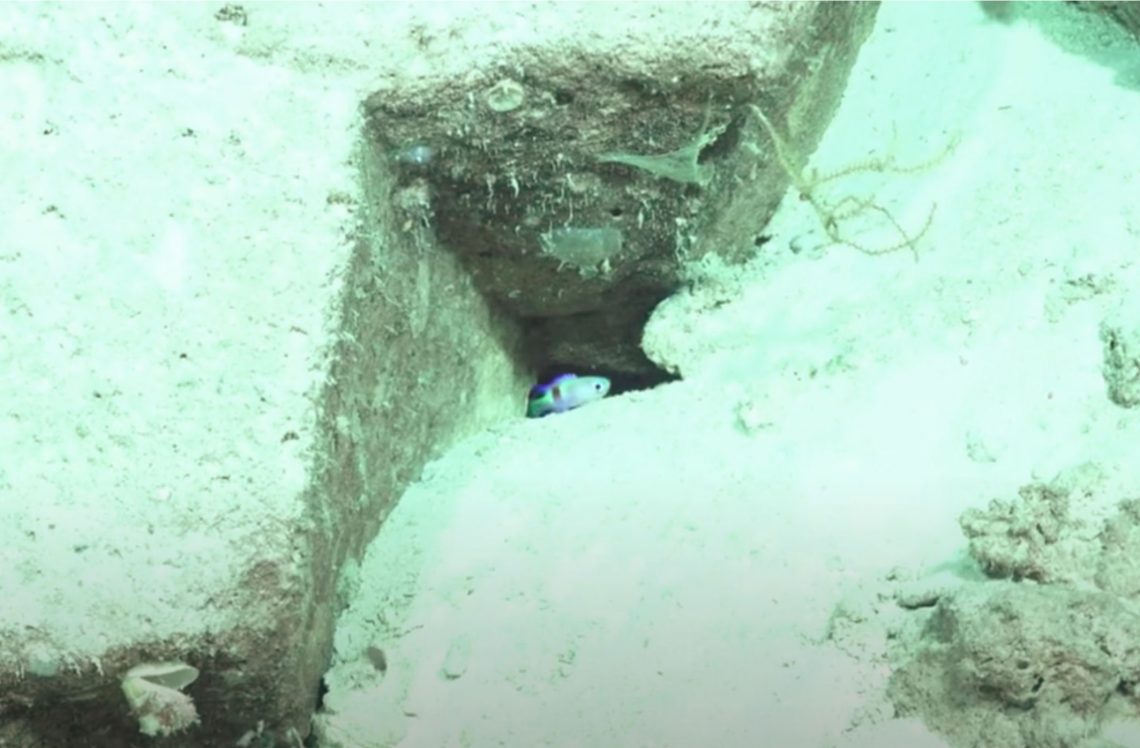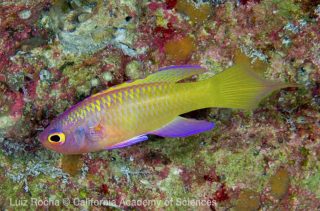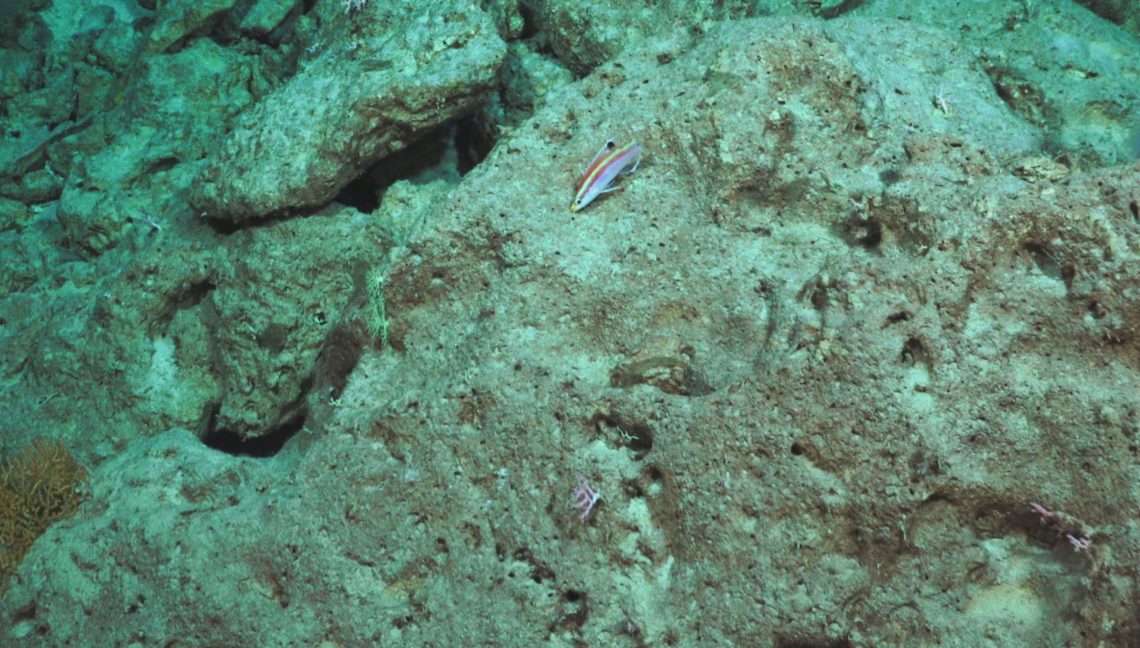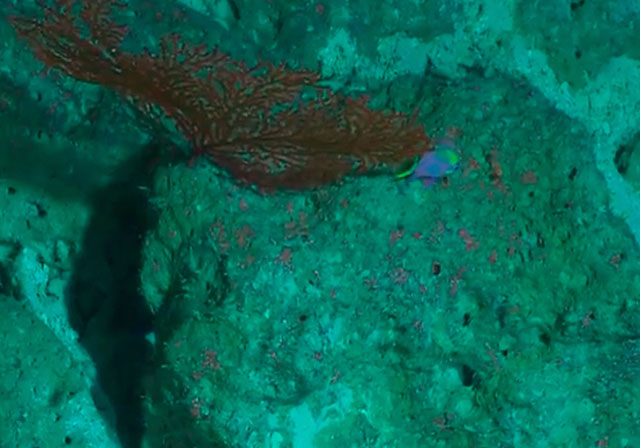My phone had been buzzing all morning from the fervent twitter notifications. Fish twitter must be up to their usual shenanigans again, I thought, as I lazily grabbed my mobile device. Buried within the swath of notifications was a link to the Schmidt’s Ocean Institute’s page, which was broadcasting live footage from mesophotic Coral Sea via the R/V Falkor. Surely this was worth watching, and before long I was at my desk watching in real time with fellow ichthyologists online.

The ship had already ascended to ca. 500 m at the time of me tuning in. At this depth, we are just beginning to breach into the lower mesophotic, a poorly explored marine realm sandwiched between the photic and aphotic zones. More is known about the deep sea and shallow reefs than the mesophotic! Here, a unique assemblage of deep-dwelling coral reef species take refuge, many of which are completely new to science. Sure enough, it wasn’t long before we saw our first new species; one from the genus Grammatonotus.
Grammatonotus is a genus of spectacular, rather diminutive fishes from the family Callanthidae, a family more commonly recognized by the anti-tropical genus Callanthias. Unlike Callanthias however, Grammatonotus is lesser known, with all its species confined to very deep reefs in the lower mesophotic. Because of this preference for deep, poorly explored habitats, the genus is plagued with undescribed species in need of names. Throughout the Falkor’s live feed in the lower mesophotic, we were able to catch brief glimpses of Grammatonotus, but it was only at 420 m that we were able to get a good, clear look at one.


Nestled in a crack was a dainty little fish, faintly pink, enormous eyes, and with an electric purple dorsal fin. The posterior body was saddled with a thick band, clearly its most distinctive feature. A quick consult with two other ichthyologists, Dr. Luiz Rocha (California Academy of Sciences) and Benjamin Frable (Scripps Institution of Oceanography), resulted in an agreeable consensus that this was likely to be a new, previously unknown species of Grammatonotus. The dive was off to an exciting start (for me), or end.

Further into ascend at around 370 m we come across another fish. This one slender, rather cylindrical, and with a peppermint stripe. I recognized this one immediately as Bodianus thoracotaeniatus (family Labridae), a very rare species known from exceedingly few photographs. The species is known primarily from the Kyushu Ridge in East Asia, where it is most often obtained as a by-catch of deep trawl fishing. The species has most recently been captured on film in 2017, by the NOAA Okeanos Explorer in the Mariana Archipelago. Its presence here in the Coral Sea represents a major range extension, though more careful observation and specimens are needed to confirm if the population here is representative of the same species.

At around 235 m, we come across yet another fish with a significant range extension. Although the fish was only momentarily captured, and along the periphery of the screen, it was immediately identifiable as Odontanthias tapui (family Serranidae), a spectacular fish with deep purple scales and long, filamentous tails. Like the preceding account, the presence of O. tapui in Australian waters marks a significant range extension for the species. The species is known primarily from the oceanic islands of French Polynesia but has recently been reported from American Samoa. With only a handful of dives in and several weeks’ worth of exploration left to go, it is almost certain that we’ll be seeing more appearances of these elusive fishes.

